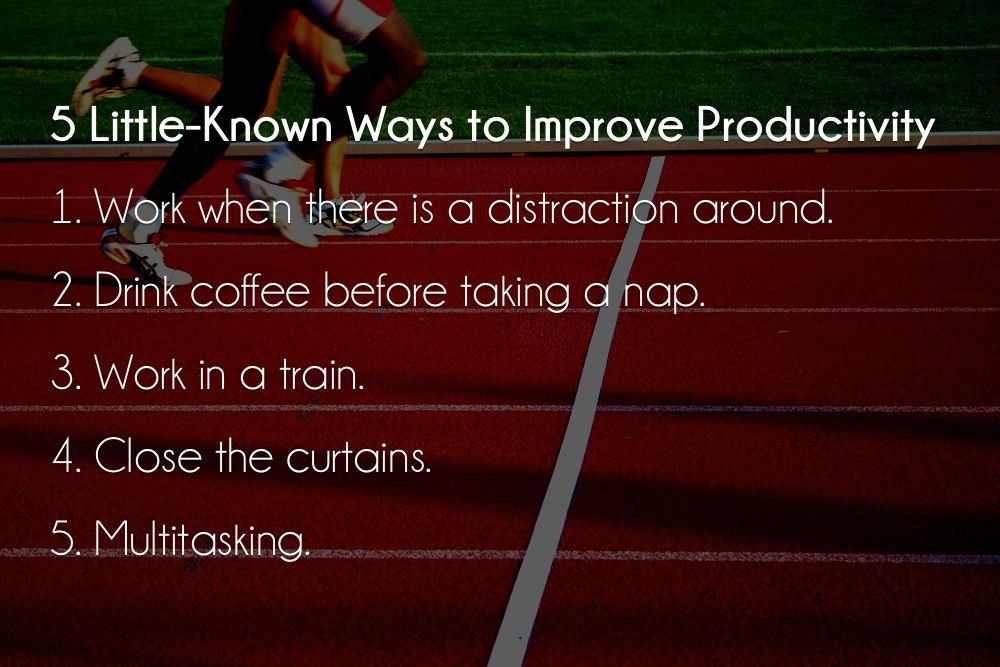1. Work when there is a distraction around
Your environment doesn’t have to be 100% quiet if you want to get work done. Let’s say that you are working from home and you have kids. Let’s also assume that you don’t have a dedicated workspace in your home to do your work. Naturally, you could decide to do work during the quiet hours (before the rest of the family wakes up), but not all of the tasks have to be done then. The fact is that there are certain tasks which allow more distraction than others, and when you know this, you can plan your days more efficiently. In fact, you could dedicate those quiet hours to working on something valuable while the rest of the time (when your family is awake) you can finish less valuable tasks. For instance, I can check most of my social media accounts, do some simple blog-related maintenance tasks or check my e-mail (most of the time) even if my son is pulling my sleeve or if the TV is on in the background. When I know that certain tasks do not require my full concentration, it’s easier to plan my days with that knowledge in mind.
2. Drink coffee before taking a nap
Want to boost your afternoon productivity? Then take a caffeine nap! According to a study by Jim Maas, PhD, professor of psychology at Cornell University, combining coffee and napping time can have a big improvement in one’s personal productivity. Coffee enters your bloodstream approximately 20 minutes after you have consumed it. The minute figure is exactly the same as the length of your nap, so these two play well together. In order to implement this technique, do this: If you are not a coffee drinker, that’s fine too: even with a 20-minute nap alone, you can feel super-fresh and productive as well.
3. Work in a train
It’s so funny to think that the places that seem like the last ones in which to get anything done are the best for productivity. I’m talking about trains, and when I travel alone, I look forward to getting work done there. The effect is almost like working in a coffee shop, where people come and go and there is some distraction around all of the time. This kind of ambience is the same on trains, but the distraction doesn’t bother me at all. In fact, I have done a lot of work during my trips when I’m moving from one place to another. To maximize your train working experience, prepare yourself in the following way:
Have your material ready (for e.g. I have outlined all my blog posts before I start writing them) The material can be used offline if necessary (download the documents and other files to your local computer in advance) Have a mobile Internet access with you Headphones (for listening to podcasts and educational material, or even listening to music when working) An e-book reader (if for some reason your laptop batteries die down, you can use your time productively)
Finally, decide in advance what you want to do. For instance, I have been writing e-books, blog posts or going through some educational materials while I travel. When you plan your train time, you can get started with your tasks right away and no time is spent on figuring out what to do when you should be already working.
4. Close the curtains
It may sound funny that closing the curtains can improve your productivity but it’s actually true. For instance, I might do some work at the dining table where there is a window to the left of me. Since I can see the nearby parking space through the window (and the people and moving cars as well), the movement might catch my attention, so the simplest way to prevent the distraction is to close the curtains. That way I’m not able to sense the movement and I can put all of my attention to my work. If you have similar kinds of experiences, do this simple thing to fix the situation.
5. Multitasking
Would you believe me if I said that multitasking can make you more productive? Well, that’s what I’m telling you and I’ll let you know how. In normal circumstances you should focus on one thing at a time: for instance, if you are creating something (like writing a blog post), you should focus on the writing part and nothing else. But what about those boring tasks that you have to do—no matter what? Let’s imagine that you have to do manual data input work and there is no way around that. To make things a little bit easier, you could do something that is referred as “mindful multitasking,” which is a term I have learned from a great book by Lucy Jo Palladino (“Find Your Focus Zone”) and the basic idea is to use multitasking to get the boring thing done. In our example, when you are doing a data entry task, you could check your Facebook page or your e-mail every once in a while to make you more alert. When you do this, you are more energized to take care of the boring tasks. The mindful part comes from understanding that you are indeed multitasking. You also realize that this is decreasing your performance, but at the same time, you are willing to accept the costs, since it helps you to get the tedious work done.
Conclusion
It’s interesting to learn more about the unconventional ways to improve personal productivity. I know that there are other tips like this, but now it’s your turn: list your own unconventional productivity tips on the comments area. We all would love to learn more!
